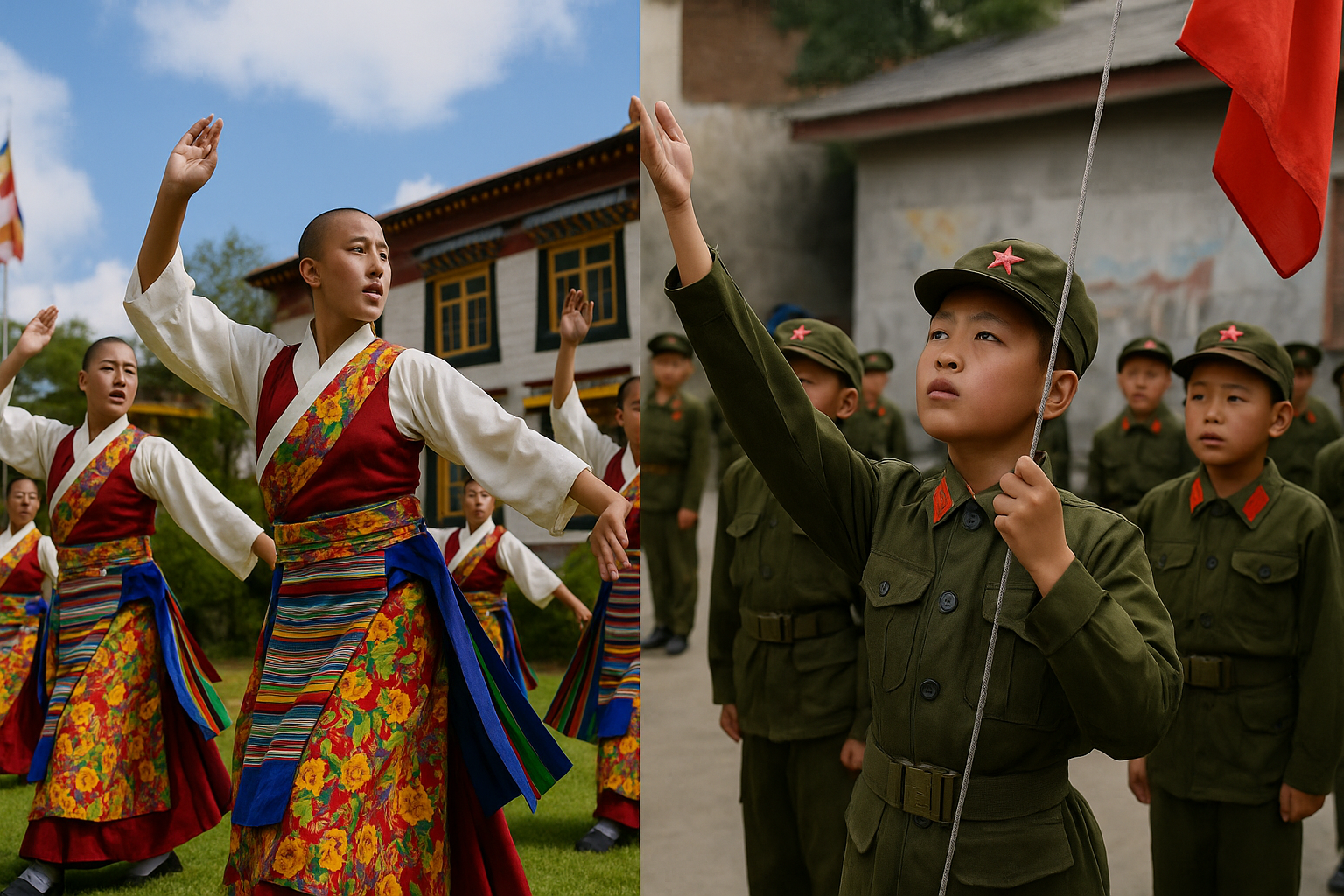China’s forced assimilation policies in Tibet have entered a new and darker phase. As Beijing closes Tibetan schools and pushes over a million Tibetan children into assimilationist boarding institutions, cultural extinction is no longer a by-product of state policy—it is the policy itself. By contrast, in India’s Himalayan frontier, the Army demonstrates a different model: enabling Ladakhi, Monpa, and Arunachali communities to preserve their identity through culturally sensitive education and development. The juxtaposition is stark. Where the PLA enforces erasure, the Indian Army nurtures survival.
UN Documentation: A Programme of Cultural Erasure
In February 2023, three UN special rapporteurs on minority issues, education, and culture warned that approximately one million Tibetan children were trapped in compulsory residential schools. They described the system as a “large-scale programme intended to assimilate Tibetans into majority Han culture,” in violation of international human rights standards.
In these institutions, the curriculum is delivered exclusively in Mandarin, stripped of Tibetan history, language, or culture. Human Rights Watch reported the closure of long-standing Tibetan schools, including the prestigious Jigme Gyaltsen Vocational High School in July 2024. Educators have been persecuted: more than 20 were detained and tortured in May 2024, one of whom died just three days after release from electric torture. The result is devastating: Tibetan children are losing their language, and with it, the ability to communicate with their own families.
India’s Army: Enabling Cultural Flourishing
In sharp contrast, the Indian Army’s Operation Sadbhavana, relaunched in 2023, reflects a culturally sensitive approach. Seven Army Goodwill Schools now serve over 2,200 students in Ladakh, blending quality education with respect for local traditions.
The outcomes speak for themselves. In Arunachal Pradesh, 38 out of 44 students from remote Jang and Dirang villages cleared the All India Sainik School entrance exam after Army-led coaching in 2024–25. The initiative combined academic preparation with confidence-building and personality development, without erasing local identity.
Support also extends to community projects. The Army provided Rs 8.5 lakh worth of furniture and stationery to Thupten Choiling Balika Vidyalaya near Tawang’s Yangla Gonpa. Children expressed gratitude with cultural performances—a celebration of heritage unthinkable under PLA supervision.
Tibetan Refugee Success in India
India’s embrace of Tibetan refugees demonstrates how pluralism sustains cultural survival. Since 1960, nearly 80,000 Tibetans have rebuilt their lives in India, widely recognised as the world’s most successful refugee community.
The Tibetan Institute of Performing Arts (TIPA), founded in 1961, has trained over 550 students in Tibetan opera, music, and dance. With support from India’s Ministry of External Affairs, TIPA now collaborates with institutions such as the National School of Drama, while extending training to Himalayan students in Ladakh and Tawang. India has not demanded assimilation; it has enabled preservation.
PLA’s Record of Suppression
The PLA’s role in Tibet has always been that of an enforcer. In 1959, during the Tibetan uprising, PLA units shelled Norbulingka Palace, killing tens of thousands. In 2008, commemorating the uprising’s anniversary, protests swept across the plateau. The PLA’s crackdown left more than 200 Tibetans dead and over 1,000 disappeared, according to the Central Tibetan Administration.
Today, Tibet’s children are subjected to military training during school vacations, donning fatigues, raising Chinese flags, and drilling under PLA veterans. Education is militarised, not to prepare children for opportunity, but to indoctrinate them in obedience.
Pluralism vs Assimilation
The divergence between India and China is rooted in their distinct political philosophies. India’s Constitution enshrines protections for linguistic and cultural minorities: Article 350A mandates mother-tongue instruction, while Article 350B provides for linguistic safeguards. This framework has enabled India to cultivate what scholars refer to as unity in diversity.
By contrast, the PLA is not a national army but a party army, sworn to the Communist Party, not to a constitution. Its mission is to enforce political control—even if that means dismantling entire cultures.
Two Models, Two Futures
Tibet’s tragedy illustrates the stakes of cultural preservation in the modern state. China’s systematic assault—from forced boarding schools to militarised childhoods—amounts to one of history’s most sweeping assimilation campaigns. Over a million Tibetan children face the prospect of growing up unable to speak their own language or practice their traditions.
India shows another path. Army schools in Ladakh, Tibetan refugee institutions like TIPA, and programmes in Arunachal Pradesh prove that security and diversity can reinforce one another. By enabling communities to thrive as both Indians and custodians of distinct traditions, New Delhi demonstrates that pluralism is not a weakness but a source of strength.
The global implications are clear. As authoritarian regimes experiment with China’s assimilationist model, India’s pluralist democracy offers a counterpoint: cultural preservation as a means of national resilience. The choice is no longer abstract. It is between armies that destroy identity, and armies that defend it.

